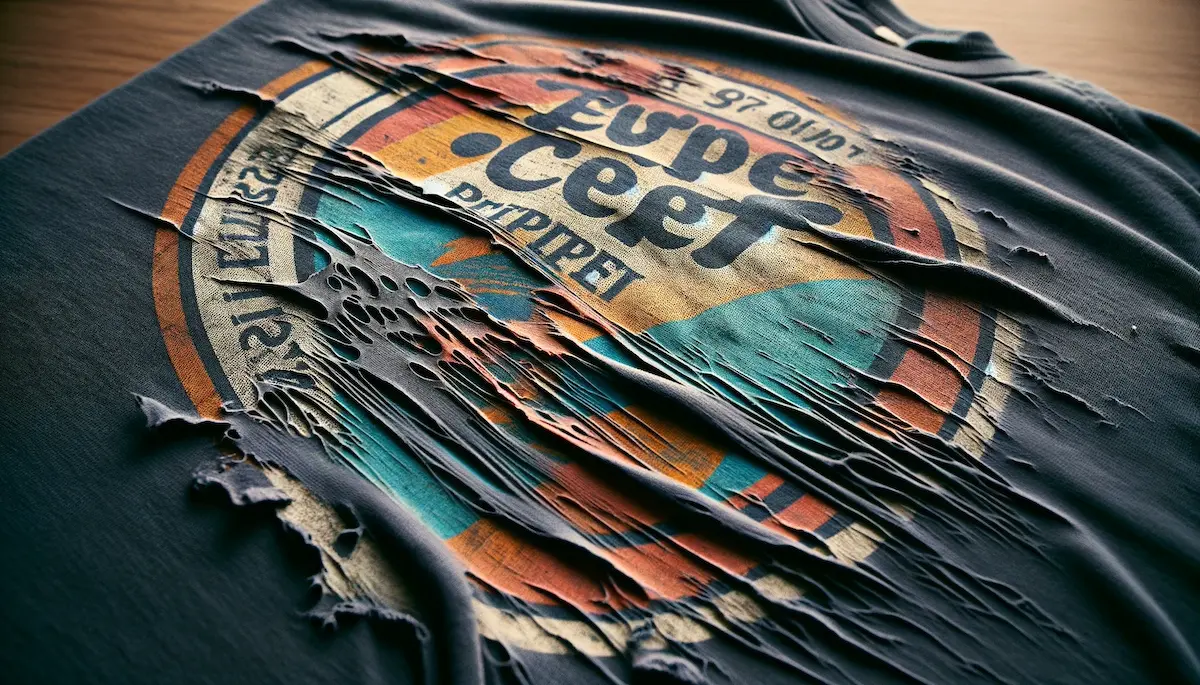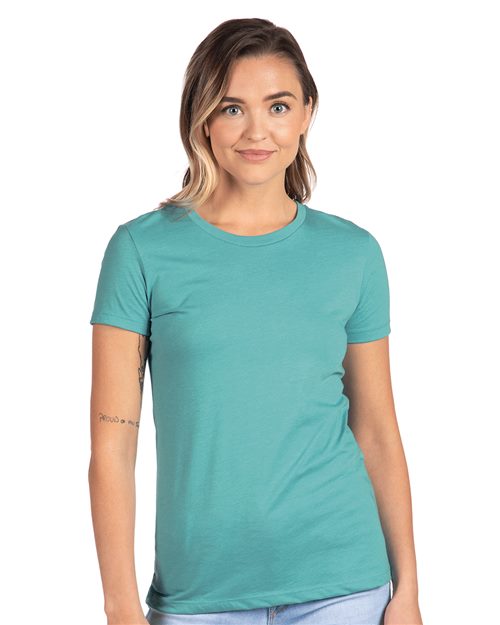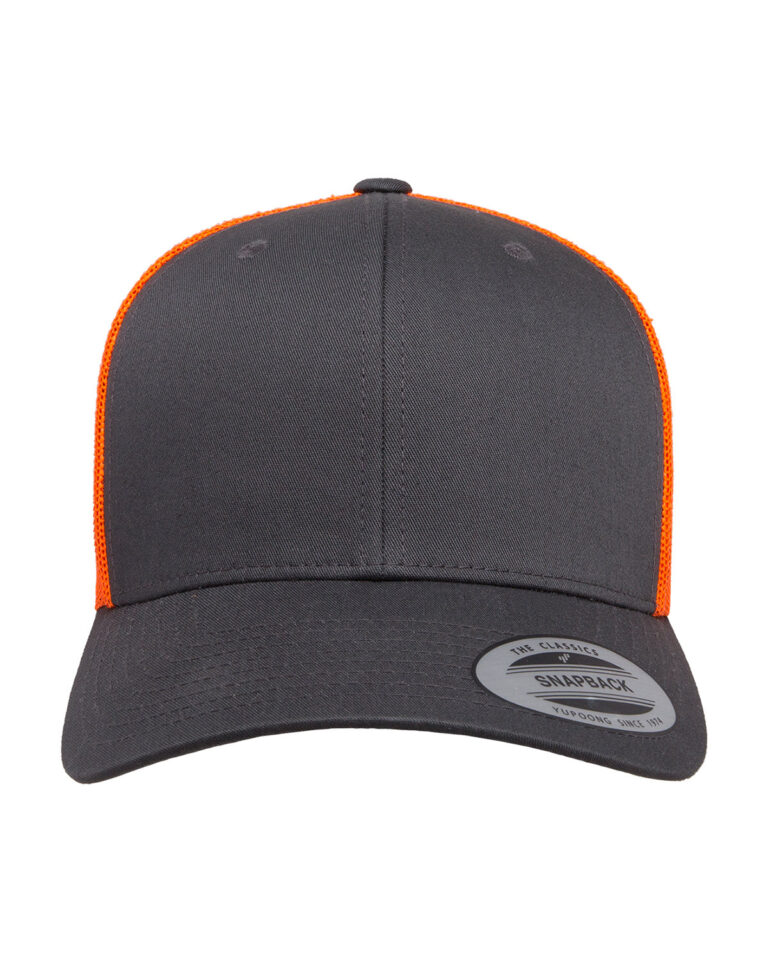What is screen printing, and why would you want to remove it?
How to remove printing from a shirt? Screen printing is commonly used to apply designs and logos onto fabric. However, there are times when you may want to remove it. In this blog, we’ll explore why someone would want to remove screen printing from shirts. We’ll also provide effective methods for doing so.
Understanding screen printing and its application on fabrics
How to remove printing from a shirt? Screen printing pushes ink through a mesh stencil onto t-shirts, posters, and other items. This process creates vibrant designs that are tough and long-lasting. The method for fabric application is often called silk screening or serigraphy. This is because its roots are in silk, which is used as the screen material.
This technique gives fabrics their unique looks. It layers ink colors for rich graphics.
The squeegees play a big role here; they drag the ink across the stencil to transfer it onto whatever’s under it. Screen-printed fabrics are common in retail and wholesale markets. That’s why this method is popular for mass production. It’s efficient and cost-effective! Screen printing can handle it all. It can create simple logos or complex art on cotton tees or polyester blends.
DESIGN YOUR OWN APPAREL

Common reasons for wanting to remove screen printing from shirts
Screen printing adds unique designs to shirts, but sometimes those designs need to go. Here are a few reasons why someone might want to remove ink from a shirt:
- The print has aged and cracked. Over time, the design can look old and worn out, making the shirt less attractive.
- A change in style or preference. People’s tastes change, and they may no longer like the graphic on their shirt.
- Mistakes in printing. Sometimes, flaws or errors in the design can ruin its appearance.
- Rebranding purposes. Companies may need to remove old logos when updating their branding.
- Secondhand garments. Those who buy used clothing might want to remove the previous owner’s design choice.
- Customization for an event. Shirts may be repurposed for different events or activities by removing the original print.
Potential damage to the fabric caused by screen printing removal
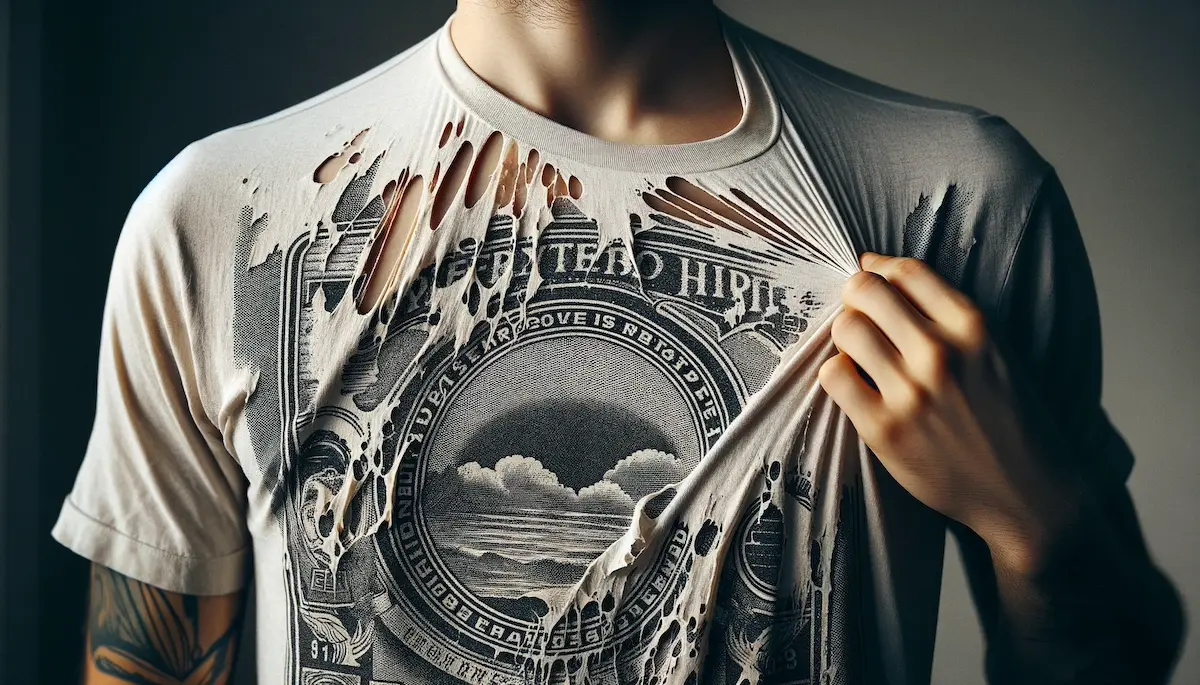
Taking screen print off a shirt can hurt the material. Chemicals like acetone might be too strong for some fabrics, especially synthetics. If you rub too hard when using chemicals, you could tear or wear out the cloth.
Some shirts have detailed designs from screen printing. This makes them harder to clean without damaging the fabric.
Careful use of nail polish remover and rubbing alcohol is important. It prevents harm to your shirt. These chemicals must be handled carefully so they don’t weaken or discolor the fabric.
Incorrect use of heat presses and other removal tools may also change your clothes’ texture and look. Consider how different fabrics react. Try to remove a design or logo from any garment.
How to remove Printing from a Shirt: identify the type of screen printing ink used
It’s crucial to understand the ink type before attempting removal. Being aware of the potential damage to the fabric is important. To identify screen printing inks, look closely at the print’s surface and texture.
Plastisol ink feels slightly raised and rubbery since it sits atop the fabric. If you stretch the shirt and see cracks in the design, it’s likely plastisol. Plastisol is a top choice for retail screen printing.
Water-based inks are different. They soak into fabric fibers, making them much harder to feel by hand. These inks don’t crack like plastisol. However, they may fade over time with washing machine cycles or exposure to sun.
Always check labels or ask manufacturers about the specific silk-screen printing techniques they use on your garment. Do this before starting any removal process. This knowledge helps select suitable chemical solutions like acetone without risking further damage.
Precautions when working to remove screen print from a shirt
- Test the chosen solvent or remover on a small area of the fabric to check for damage.
- Work in a well-ventilated area to avoid inhaling chemical fumes.
- Wear protective gloves to shield the skin from direct contact with harsh substances.
- Use a small amount of solvent and gently rub the area to prevent spreading ink or damaging the fabric.
- Thoroughly wash and rinse the fabric after removing the screen print. This ensures complete removal of any remaining solvent or remover.
- Research and understand specific requirements for different fabric types.
- Carefully follow instructions for safe and effective screen printing removal methods.
What are effective ways to How To Remove Printing From A Shirt?
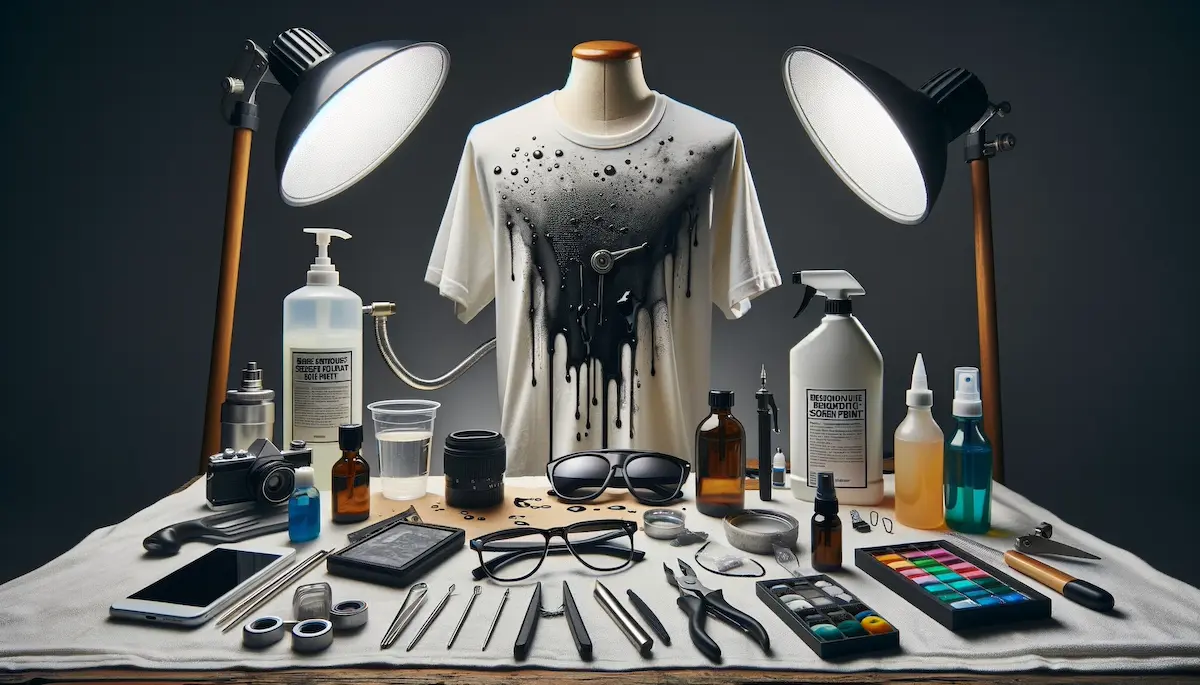
There are various effective methods. They include solvent-based treatments, gentle non-chemical approaches, and targeted logo removal techniques.
Using solvent-based methods such as acetone for screen print removal
Using acetone to remove screen prints from shirts is highly effective and efficient. Here are some ways to effectively use acetone for screen print removal:
- Apply a small amount of acetone on a cotton ball or cloth and gently dab it onto the printed area.
- Let the acetone sit for a few minutes to dissolve the ink, then gently rub the area with a clean cloth to remove the print.
- For larger areas, soak the printed side of the fabric in acetone for a few minutes. Then, gently scrub off the dissolved ink with a soft-bristled brush.
- Rinse the fabric thoroughly with water. This will remove any remaining acetone and dissolved ink.
- Finally, wash the fabric as usual to ensure all traces of acetone and dissolved ink are removed.
Exploring the use of polyester-safe screen print removers
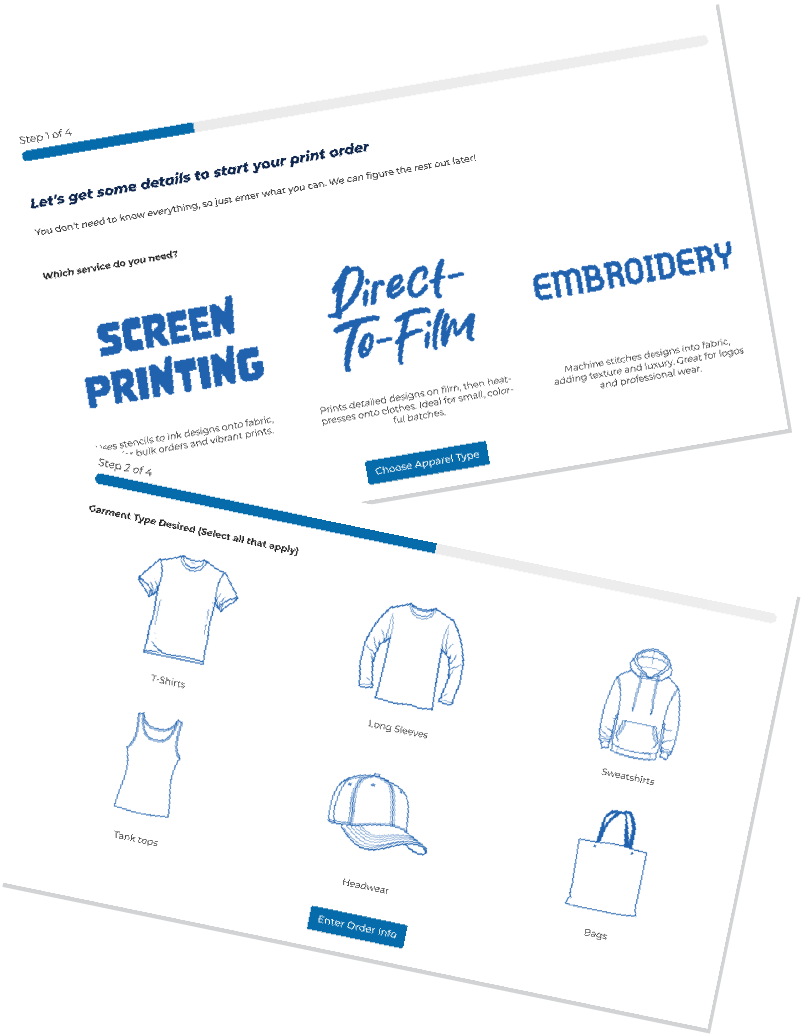
WE HELP YOU MAKE AMAZING CUSTOM PRINTED TEES & APPAREL!
CUSTOM IS COMPLICATED
WE MAKE IT EZ
Let our dedicated team help guide you! Click below to send us basic information to get your order started!
It is essential to continue exploring safe methods for removing screen printing from shirts. We should consider the use of polyester-safe screen print removers. These specialized removers are designed to dissolve screen printing from polyester fabric. They do this effectively while preserving the fabric’s integrity. Here are some important points to note:
- Polyester-safe screen print removers are specially formulated to target and break down screen printing ink on polyester fabric. They do this without causing damage.
- These removers provide a gentle and effective solution. They safely dissolve and remove screen printing from polyester material. This ensures that the fabric remains intact and undamaged throughout the process.
- Individuals can effectively remove screen printing from polyester shirts. They can do this without compromising the quality or structure of the fabric. They can do this by using polyester-safe screen print removers.
- It’s important to follow the manufacturer’s instructions when using these specialized removers. This ensures the safe and successful removal of screen printing from polyester fabric.
- Polyester-safe screen print removers are gentle yet effective. They offer a reliable solution. It helps people remove unwanted screen printing from polyester shirts.
- When working with these removers, be sure to prioritize safety. Follow recommended precautions. Use protective gear as indicated by the product guidelines and safety regulations.
- Using these solutions safe for polyester aligns with best practices for protecting and caring for polyester fabrics. It allows individuals to achieve desired results. It also safeguards the quality of their clothing.
Removing screen printing with gentle treatments like nail polish remover
To remove screen printing with nail polish remover, follow these steps:
- Soak a cotton ball in nail polish remover.
- Gently rub the soaked cotton ball over the screen printing on the shirt.
- Allow the nail polish remover to dissolve the ink for a few minutes.
- Use a clean cloth or cotton swab to wipe away the dissolved ink.
- Repeat the process until the screen printing is completely removed.
Non-chemical methods for removing screen printing from shirts
To remove ink from shirts without using chemicals, try these gentle methods:
- Use a combination of salt and vinegar to create a natural solution for dissolving the ink.
- Try rubbing the printed area with a cloth soaked in nail polish remover – the acetone can help dissolve the ink.
- Experiment with a mixture of baking soda and water to gently scrub off the screen printing.
- Consider using adhesive tape to lift off small areas of screen printing. This will not cause any damage.
- Use cotton balls soaked in nail polish remover to rub the design. Remove the screen printing from clothing.
Safe rinsing techniques and ink dissolution for screen print removal
To safely remove screen printing from shirts, follow these methods and precautions:
- Soak a cotton ball in rubbing alcohol and gently rub the printed area to dissolve the ink residue.
- Rinse fresh ink from recent designs on shirts with cold water. This won’t damage the fabric.
- Use degreasing agents to remove oil, grease, and ink residues. They may impact print quality.
- Soak a cotton bud in nail polish remover. Gently rub the cracked print to remove it effectively.
- Always carefully follow safe rinsing techniques. Use ink dissolution methods to ensure thorough removal while protecting the fabric’s integrity.
- Avoid using paint strippers or dimethyl ketone (acetone) on clothing. They can cause damage and pose safety risks when not used properly.
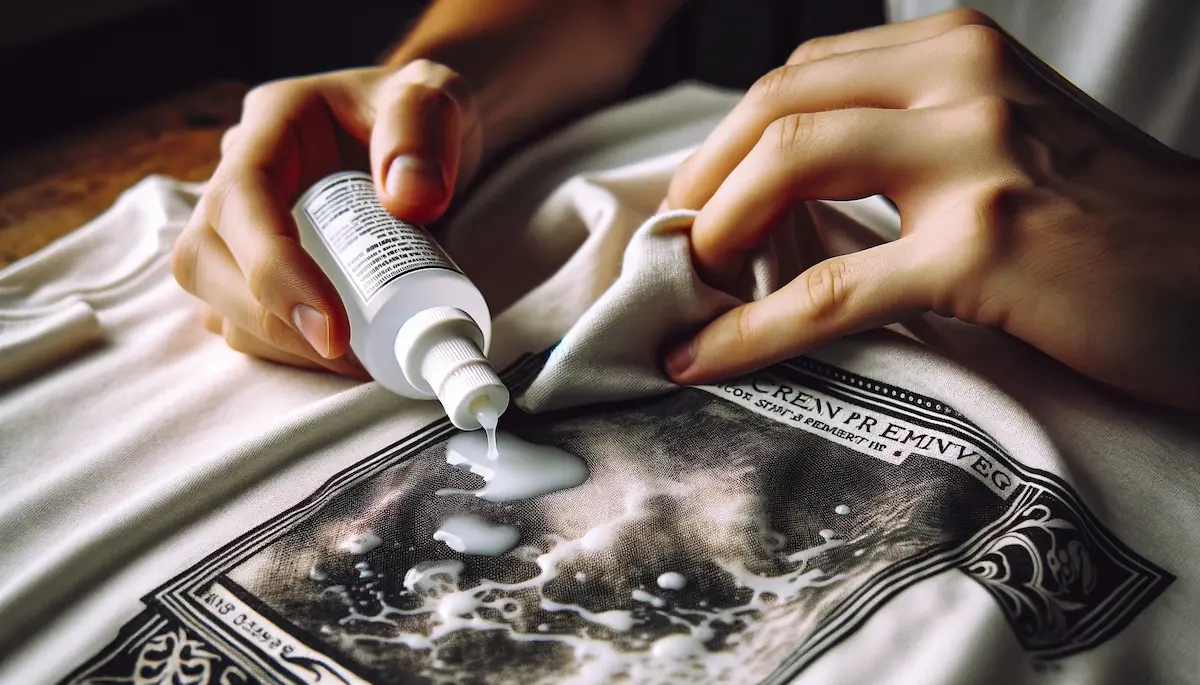
Practical steps to effectively remove logos from clothing without damage
To safely remove logos from clothing without causing damage, follow these practical steps:
- Gently loosen the edges of the logo with a knife to avoid fabric damage and then peel off the logo using fingers.
- Test solvents on a small, inconspicuous area of the clothing before applying them to remove logos. This can prevent potential damage.
- Use rubbing alcohol to dissolve the adhesion of polymer ink. This will facilitate easy and safe removal of logos from shirts.
- Use nail polish remover or alcohol to safely and effectively remove logos. This breaks chemical bonds between fabric and logo adhesives.
- Use specialized methods to remove DTF prints from shirts. Ensure the targeted logo is removed without harming the fabric.
Understanding the potential risks of removing specific screen printed designs
Removing specific screen printed designs from shirts can pose risks. Certain logos or patterns have intricate details and delicate nature. They can damage the fabric. Moreover, attempting to target and remove particular designs increases the likelihood of inadvertently causing harm to the surrounding fabric. This is especially true when dealing with fine lines or complex stencils.
Carefully assess the intricacy of each design. It is crucial before embarking on removal. Rushing through this process can lead to unintended damage.
Identifying potential risks associated with removing specific screen-printed designs requires precision and caution. Consider factors like intricate patterns, fine lines, and unique fabric properties.
Removing vinyl print and logo residue from shirts using gentle techniques
To remove vinyl print and logo residue from shirts, follow these gentle techniques:
- Apply a small amount of petroleum jelly to the vinyl, allowing it to sit for a few minutes to loosen the adhesive.
- Gently rub a mild detergent over the vinyl area to further loosen the residue. Then, wipe it away with a cloth.
- For stubborn residue, consider using Goo Gone. Apply it to a rag for gentle removal without damaging the fabric.
- Use caution when employing a knife. Ensure it is used gently to pry off any remaining pieces of vinyl without causing damage.
- Consider using Letter Removing Solvent (LRV). It’s a safe option for removing vinyl from shirts, while protecting the fabric.
- Remember that acetone found in nail polish remover can effectively remove cracked or old vinyl printing from shirts without causing harm.
- Safely navigate through the removal process. Wear protective clothing and consider safety precautions due to solvents and chemicals involved.
What are the risks and precautions associated with removing screen print?
It is crucial to identify potential risks of damage when removing screen printing from shirts. This safeguards the fabric’s integrity. It emphasizes the importance of handling solvents and chemicals safely.
Identifying potential risks of damage when removing screen printing from shirts
Exposure to fumes from screen printing products can cause health issues. For example, it can lead to sinus irritation. Some chemicals used in screen reclamation can harm the environment. They also pose a risk to public health. Scrubbing screen print residue requires caution to ensure the fabric stays intact. Strong chemicals are used to dissolve ink prints. Use them carefully to avoid damaging the fabric. Take precautions to safeguard fabric integrity during screen print removal. Use safety gear when handling solvents and chemicals for removing screen printing.
Precautionary measures to safeguard fabric integrity during screen print removal
To protect the fabric during screen print removal, consider the following precautionary measures:
- Wear protective gloves. Follow safety precautions outlined by the manufacturer. This will help you avoid skin exposure to strong chemicals.
- Perform a spot test on a small, inconspicuous area of the fabric. Ensure that the chosen removal method does not cause damage.
- Use gentle techniques. Avoid rubbing or scrubbing too much. This minimizes the risk of fabric abrasion or distortion.
- Work in a well – ventilated area when using chemical ink removers. This minimizes exposure to potentially harmful fumes.
- Thoroughly rinse and neutralize the fabric after screen print removal. This will remove any residual chemicals and prevent potential damage over time.
- Follow proper disposal guidelines for any solvents or chemicals used. This includes during the removal process. This will prevent environmental harm.
Handling solvents and chemicals safely when removing screen printing from shirts
When working to remove screen printing from shirts, it is crucial to handle solvents and chemicals with care. Here are some precautionary measures you should take:
- Use protective gloves and eyewear to shield your skin and eyes. This protects them from potential exposure to hazardous chemicals.
- Work in a well-ventilated area or use a fume hood when dealing with solvents. This will minimize inhalation of harmful fumes.
- Store chemicals in tightly sealed containers when not in use. This will prevent accidental spills or leaks.
- Dispose of used solvents and chemicals responsibly. Follow local regulations for hazardous waste disposal.
- Keep a spill kit handy in case of accidents. It should include absorbent materials and appropriate cleaning agents for chemical spills.
Considering the potential impact on the fabric when removing screen print
When removing screen print from fabric, consider the fabric type. Also, consider how sensitive the fabric is to different removal methods. Delicate fabrics like silk or rayon may be more susceptible to damage. Sturdier fabrics like cotton can withstand different treatments.
Using the correct solvent-based or non-chemical methods is crucial. They should be tailored to the fabric type. It ensures the fabric’s integrity is preserved throughout the screen print removal process.
Protect the fabric by using gentle rinsing techniques. Handle solvents cautiously to avoid potential harm.
Protective measures and equipment to use when dealing with screen print removal
When removing screen printing from shirts, prioritize safety. Use appropriate protective measures and equipment. Here are important precautions to consider:
- Wear protective gloves, masks, and eye gear. They safeguard you from exposure to hazardous fumes and chemicals.
- Ensure proper ventilation by working in a well-ventilated area. If that’s not possible, use an exhaust system to minimize inhalation of harmful fumes.
- Follow the manufacturer’s instructions when using adhesive removers. These include products like Goo Gone and acetone. Always work in a well-ventilated space.
- Use tools such as cotton swabs or soft bristle brushes for delicate removal without damaging the fabric.
- Keep a first – aid kit close by in case of accidental exposure or injury during the removal process.
How can screen printing be safely removed from different fabric types?
You can safely remove screen printing from cotton fabric without causing damage. Use gentle solvents and non-chemical treatments. They allow for effective removal while preserving the fabric’s integrity.
Safe methods to remove screen printing from cotton fabric without causing damage
To safely remove screen printing from cotton fabric without causing damage, consider these methods:
- Use acetone or nail polish remover as a solvent-based approach for gentle and effective removal.
- Use rubbing alcohol with a dull knife or fingernail. Carefully lift off the screen printing without harming the fabric.
- Apply a solution of equal parts hydrogen peroxide and water onto the ink. This will dissolve and remove the screen printing without harming the cotton fabric.
Choosing appropriate screen print removal techniques for different fabric blends
We are looking for safe ways to remove screen printing from cotton fabric. We want to avoid causing damage. We also need to consider the right screen print removal techniques for different fabric blends.
- When removing screen prints from polyester fabric, use a gentle remover that’s safe for polyester. This will maintain the fabric’s integrity and prevent damage.
- When dealing with delicate fabrics like silk or chiffon, use non-chemical methods. For example, you can use steam or specialized fabric-safe solutions. These treatments gently treat and dissolve the ink.
- Different colors might react differently to removal methods. This means careful selection of solvent-based or non-chemical approaches is necessary. You should choose based on the color and fabric type.
- Consider the composition of fabric blends. Use a tailored approach that combines gentle treatments with safe rinsing techniques. Use ink dissolution specific to each blend.
- Use gloves and goggles when working with solvents or chemicals. This prevents harm.
- When removing vinyl prints from fabric, use gentle techniques. Remove residue without damaging the underlying fabric. This ensures thorough but cautious treatment.
Removing screen printing from polyester fabric without affecting the fabric’s integrity
Consider the following methods to remove screen printing from polyester fabric. This will avoid damage or affecting the fabric’s integrity.
- Use acetone or nail polish remover with acetone. It will dissolve and remove the screen printing. It’s effective and won’t harm the fabric.
- Gently apply rubbing alcohol on a cotton ball or cloth. This will safely dissolve and eliminate the screen printing from the polyester fabric.
- Use polyester-safe solutions to remove screen prints. Ensure effective removal without compromising the fabric’s integrity.
- Avoid harsh scrubbing or abrasive techniques that could cause damage. Instead, choose gentle yet effective removal methods.
- When using chemical solvents, ensure proper ventilation and follow safety precautions. This will protect yourself and the fabric from potential harm.
Gentle removal methods for delicate fabrics with screen printing
Removing screen printing from delicate fabrics requires gentle methods to avoid damage. Here are effective ways:
- Use rubbing alcohol to dissolve ink without harming the fabric.
- Employ a mixture of mild detergent and water to scrub off the screen printing gently.
- Consider using a soft – bristled brush to lift the ink from the fabric delicately.
- Utilize a steaming method to loosen the ink before gently wiping it away with a clean cloth.
Special considerations for removing screen print from different fabric types
Consider the fabric type before attempting removal of screen printing from delicate fabrics. This is essential. For cotton fabric, gentle methods can effectively dissolve the ink without causing damage. For example, using acetone or nail polish remover works well.
When working with polyester fabric, choose techniques that won’t compromise its integrity. This is important while removing the screen print. Different fabric blends require specific removal methods tailored to their composition and sensitivity.
Understanding these considerations ensures safe and successful screen printing removal. It prevents harm to the fabric.
You can safely remove screen printing from different fabrics by using acetone or nail polish remover. These methods are safe for cotton. For delicate fabrics like polyester, choose non-damaging techniques.
Frequently Asked Questions:
Q. What’s the best way to take print off a shirt without harming it?
A: You can gently remove printing with care for the fabric. Try using heat from an iron and then peeling away the design. It loosens the glue that holds the print, being mindful of delicate materials.
Q. Can I use any chemical to strip printing from my tee?
A: Not all chemicals are safe for this task! Look for a specialized plasticizer remover designed specifically for fabrics. This helps dissolve print adhesive without damaging your shirt.
Q. Is there a natural method to get rid of shirt prints?
A: Yes, indeed! You might try soaking the printed area in cold water. Then, rub it with a cloth soaked in alcohol. This can loosen up some types of print without harsh chemicals.
Q. After removing a print, how do I keep my shirt looking good?
A: After removing the post-print, give your garment proper fabric care. Wash it gently and let it air dry to maintain its condition. This will help avoid any damage from glass or other hard surfaces during cleaning.
Q: How can I remove screen printing from a shirt?
A: To remove screen printing from a shirt, you can use acetone or a solvent to break down the ink. Then, rinse the area with cold water and use a gentle detergent to wash the shirt.
Q: Is it possible to remove screen print from a jersey?
Yes, it is possible to remove screen print from a jersey using acetone or a solvent to break down the ink. Then, rinse the area with cold water and use a gentle detergent to wash the jersey.
Q: What should I do if I want to remove logos or designs from a shirt?
If you wish to remove logos or designs from a shirt, you can use acetone or a solvent to break down the ink. Then, rinse the area with cold water and use a gentle detergent to wash the shirt. Additionally, using a soft cloth or brush can help effectively remove the design.
Q: Are there any precautions to take when attempting to remove screen printing?
Yes, wear gloves when removing screen printing. The ink can be hard to remove. It may need acetone or a solvent to break it down. Additionally, it’s important to work in a well-ventilated area.
Q: What are the most common solvents used to remove screen printing?
The most common solvents used to remove screen printing are acetone and specialized screen printing removers. These solvents can effectively break down the ink. This makes the printing easier to remove from the fabric.

